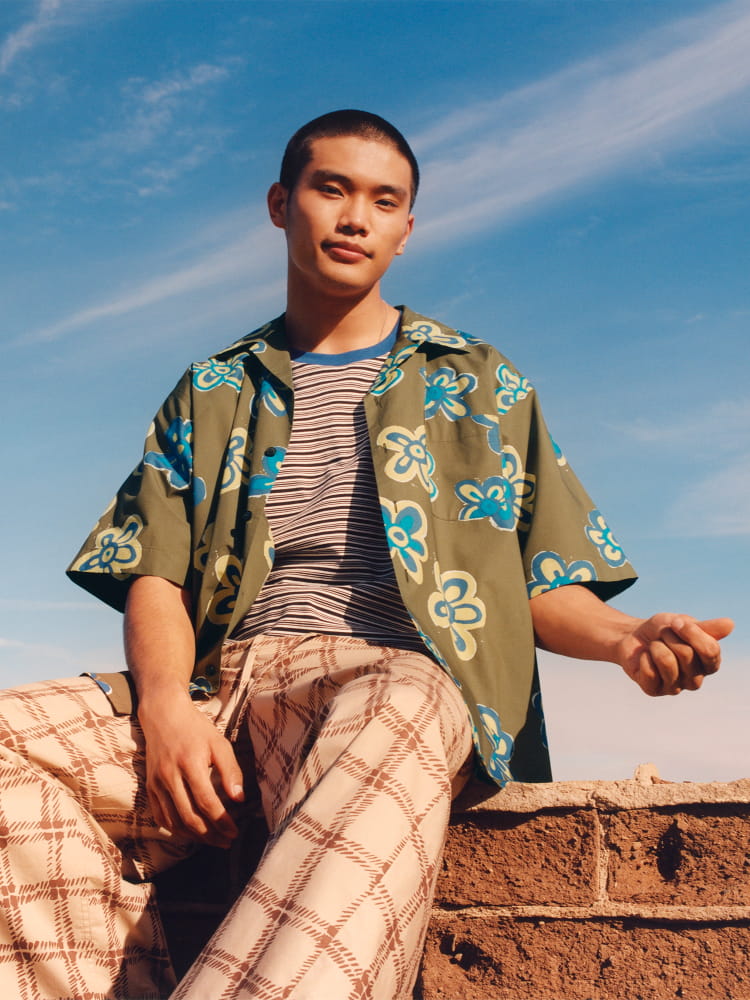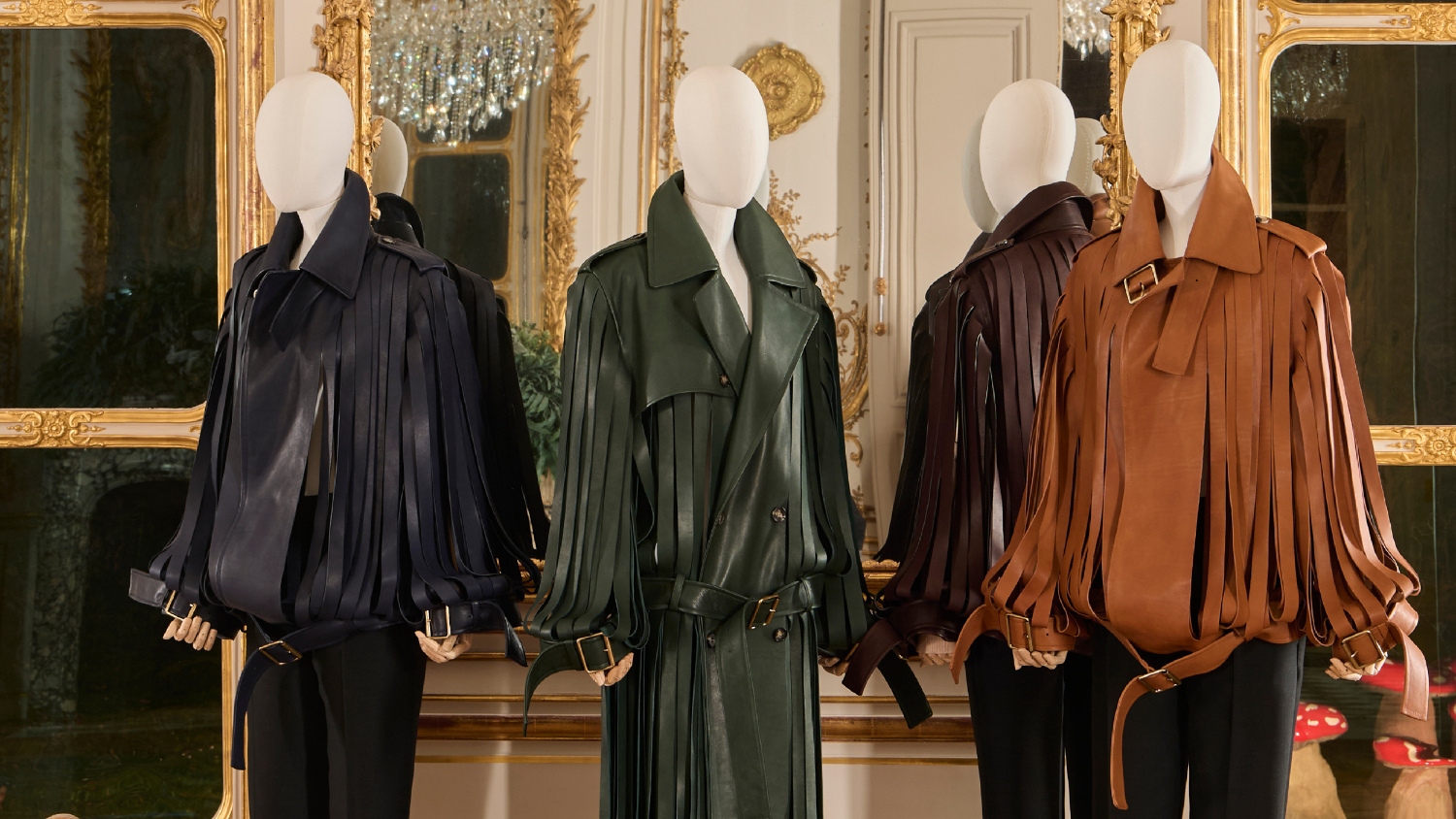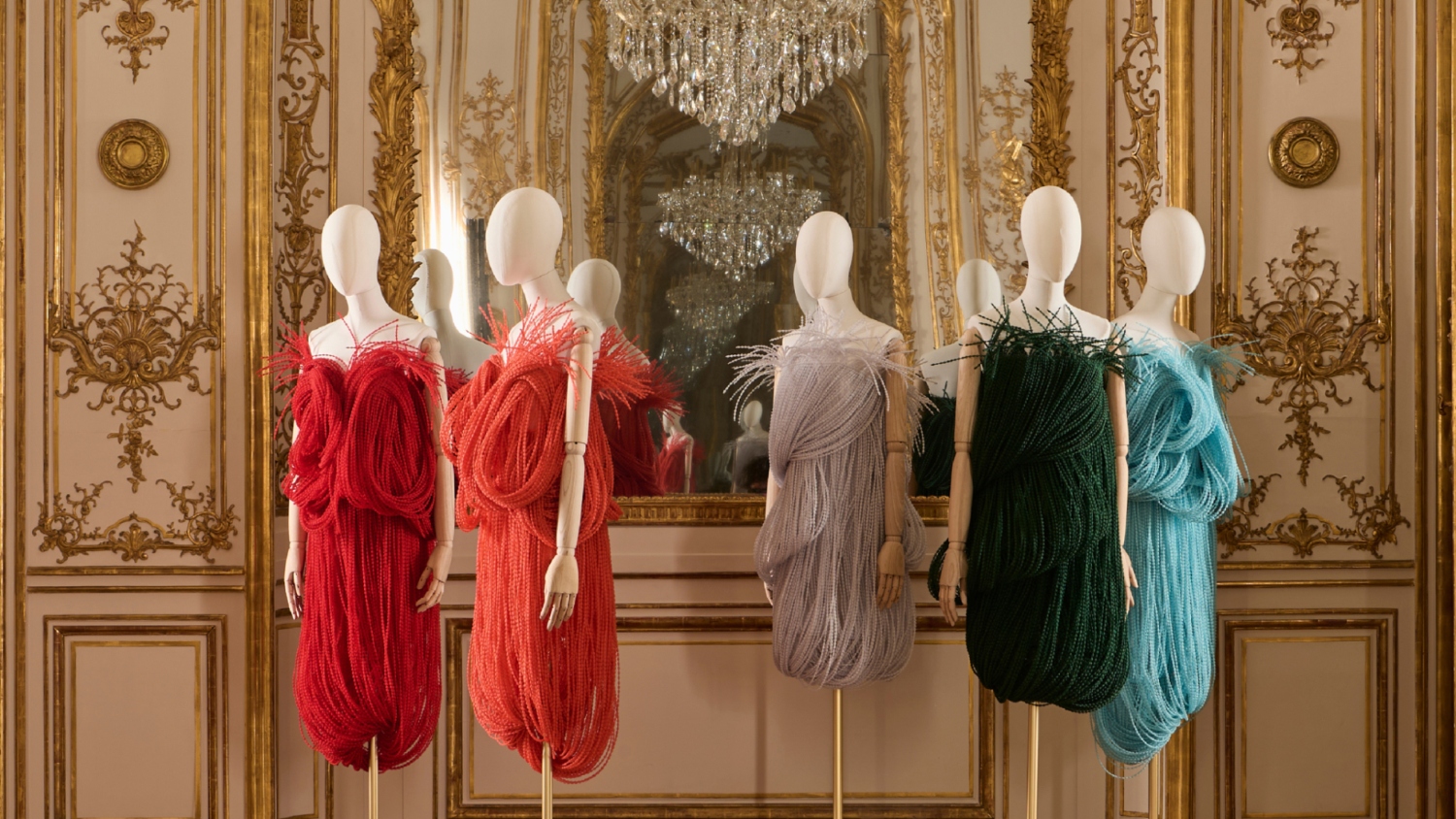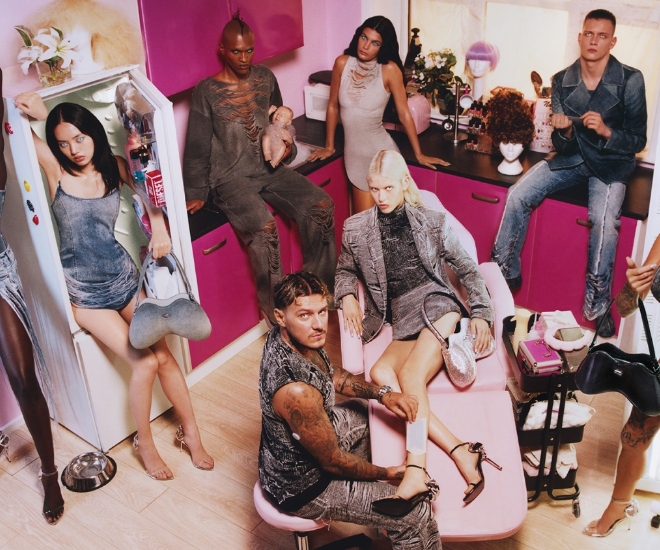Pleasure in Freedom of Expression
Past Netflix documentaries and newspaper headlines, within the context of style, “cult dressing” refers to a sartorial trope related to particular subcultures or underground actions, the place clothes selections are sometimes used as a type of revolt, id or self-expression that’s distinct from mainstream style. These subcultures may embrace teams like punk, goth, grunge, skaters or various kinds that rejected standard style norms. Cult dressing is usually outlined by its exclusivity and uniqueness, typically showcasing a selected set of aesthetics — reminiscent of do-it-yourself (DIY) style, obscure designer items or unconventional ensembles that sign membership in a selected cultural or social group. This fashion is often adopted by those that need to differentiate themselves from the mainstream, typically as a type of resistance or individuality.
As style turns into extra inclusive and accessible, customers are actually in a position to specific their genuine selves with out the obstacles that when saved sure kinds unique. This democratisation of style signifies that individuals from all walks of life can discover pleasure in dressing uniquely, with out feeling restricted by mainstream style’s norms. The important thing thought is that these kinds have been as soon as uncommon, area of interest and inaccessible to the broader public, however as style turns into extra democratised by way of social media and collaborations between excessive style and mass-market manufacturers, these as soon as “cult” kinds are more and more absorbed into the mainstream, dropping a few of their distinctiveness and rebellious energy.
The Rise of Social Media and the Loss of life of Subcultural Significance
@cynicalneoprincess If final night time was something to go by I assume I can count on a looot of Chappell Roan comparisons over the following few years. However I want everybody to know I used to be doing the entire white face drag look earlier than I ever knew who she was 😭 . . . . . . . . . #fitcheck #altfashion #altmakeup #gothfashion #clubkid ♬ original sound – ICONIC AUDIO
Style has at all times been a car for self-expression, a instrument to speak id and beliefs. For years, cult dressing — the hallmark of underground actions, area of interest subcultures and rebellious countercultures — was a bastion of inclusivity by way of exclusivity, an area the place private fashion was outlined by what was completely different from the mainstream, a subculture of people who discovered their very own sense of belonging amongst outsiders. In 2025, the panorama has shifted dramatically. Social media platforms — notably TikTok — have democratised style, enabling subcultures as soon as confined to the fringes to maneuver into the mainstream, the place their distinct kinds are appropriated, commodified and mass-marketed inflicting the strains between what’s “underground” and what’s business to blur. What was as soon as deemed “various” is now simply accessible to anybody with a cellphone and style has grow to be a extra collective, quickly altering expertise.
To many, the distinctive essence of subcultures that when outlined individuality has been commodified and marketed to the lots. As these kinds trickle right down to mass-market manufacturers and their customers, they finally grow to be mainstream traits dropping the very essence of what made them particular. What was as soon as an emblem of authenticity — from punk’s security pins and flannel shirts to the streetwear born from skate tradition — turns into diluted when packaged for revenue. This leads to the erosion of the authenticity these actions as soon as held, resulting in a way of disillusionment within the pleasure of dressing and the expression of being “uniquely you”. The “proliferation” of those once-unique kinds forces us — as style customers — to confront the dichotomy: can adopting parts of a subculture nonetheless permit house for true individuality? If not, does this disillusionment have an effect on the very thought of what it means to be “uniquely you”?
The Reconfiguration of Style Tradition
@noctez.collective blowin’ bubbles… #y2k #outfitinspo #aesthetic #y2kfashion #fyp ♬ son original – ∞
The emergence of TikTok as a worldwide cultural drive has reworked the best way many devour style. With TikTok’s algorithm-driven discovery instruments, style traits can explode and evolve in a matter of hours. Not do people have to belong to a selected subculture to achieve visibility and the “cult” side of “cult dressing” is now diluted. Within the age of TikTok, area of interest traits reminiscent of normcore, Y2K aesthetics and even particular clothes manufacturers related to subcultures are consumed and reworked by thousands and thousands. Whereas this degree of visibility is empowering, it additionally raises the query of whether or not subcultures can retain their authenticity as soon as they grow to be commercially viable.
Normcore — which initially stood out for its embrace of simplicity as a type of non-conformity — shortly advanced right into a mainstream pattern. What began as a rejection of ostentation grew to become mass-marketed and adopted by main retailers, making it accessible whereas sustaining its roots in minimalism. This shift highlights how subcultures — even these rooted in resistance to traits — can discover themselves co-opted by the very industries they as soon as challenged.
Equally, Cottagecore — a method born from a romanticised, rural way of life that rejects modernity — attracts inspiration from classic, rural aesthetics with a countercultural edge. Initially a distinct segment, it has seen a surge in recognition, pushed partially by platforms like TikTok and Etsy, and compounded to mainstream tradition by the recognition of the “Trad Spouse” way of life pattern. This motion — as soon as outlined by its “cultish” high quality — has grown to see collaborations between indie manufacturers and mass-market retailers like City Outfitters, blurring the road between underground and mainstream attraction.

The Y2K aesthetic — rooted in nostalgia for the late Nineties and early 2000s — exemplifies how traits are revived with new depth within the digital age. Outlined by metallics, uncovered underwear waistbands over saggy, low-rise denims and daring logos, this pattern has exploded throughout social media and into the style mainstream (re-energised by Diesel, who one may argue was a pioneer of the pattern within the early 2000s, showcasing the cyclical nature of style as kinds make their method again into the highlight, typically evolving but remaining rooted of their origins), revealing the ability of collective reminiscence and viral affect in reshaping previous kinds for at this time’s viewers.

Lastly, streetwear — which as soon as emerged from skate, hip-hop, and punk subcultures — has ascended from its underground roots to grow to be a dominant drive in world style. Manufacturers like Supreme and Off-White, which have been initially a part of countercultural actions, now stand on the forefront of excessive style, demonstrating how kinds born in revolt can redefine what is taken into account mainstream. This shift underscores the fluid nature of style, the place the strains between subcultures and business success proceed to blur. There may be additionally a component of nostalgia, cultural relevance and timing at play. Cottagecore, for instance, aligns with a collective want for simplicity and a return to nature amidst digital overwhelm. Equally, the resurgence of Y2K aesthetics faucets into nostalgia — advertising and marketing it as a type of self-expression, however typically lowering it to a option to commodify recollections.
Redefining Individuality in a Collective Style Tradition


Uniqlo Collab with Marni (left) and Jil Sander (proper)
One of the crucial notable markers of this shift is the elevated frequency of collaborations between avant-garde designers and mass-market manufacturers. Labels like Uniqlo, H&M and even fast-fashion titan Zara have lengthy partnered with high-end designers to make their collections out there to the lots. Designers with cult followings reminiscent of Jil Sander, Comme des Garçons and Alexander Wang have contributed to strains that carry excessive style into inexpensive retail areas. This merging of excessive and low style serves to additional dissolve the boundaries that when outlined the 2. These partnerships make luxurious design extra accessible but additionally problem the idea of style as an expression of exclusivity. When cutting-edge designs can be found at one’s native Uniqlo, it turns into tough to assert that these items — as soon as markers of individuality — are really distinctive anymore.
In a time the place digital traits dictate what’s “in” and quick style accelerates manufacturing and distribution, private expression in style has grow to be extra about what the patron can entry than about being “uniquely you”. The digital age has additionally accelerated the velocity at which these traits evolve, making it more durable for anyone fashion to stay “cult” for lengthy. The people who originated the pattern or belonged to those subcultures, lose the enjoyment of being “uniquely you” and shortly transfer on to the following pattern. Subcultural style was as soon as about developing an id by way of distinctive selections — garments that represented a selected perception, group or thought. In the present day, that course of has been shortened into digestible moments: a TikTok problem, an influencer partnership or a viral meme. The notion of “individuality” is now framed inside the context of a collective cultural second. The problem customers face is how they intend to protect individuality in a society the place cultural traits really feel more and more orchestrated and the way manufacturers market this to customers whereas nonetheless leveraging on market traits and sustaining revenue margins.
Luxurious Labels, Cult Followings & Designer Reshuffle

One other component of cult dressing in luxurious style strikes away from the underground rebellions and as an alternative faucets into a wholly completely different subculture — one constructed round an aspirational way of life outlined by exclusivity. Designers like Jonathan Anderson and Demna faucet into this area of interest by creating collections that appeal to a selected kind of shopper — one who values individuality but additionally seeks to belong to an unique group. These collections embody a novel intersection of private fashion and aspirational standing.

Jonathan Anderson’s tenure at Loewe — marked by surreal and sometimes daring designs — pushed the boundaries of what was historically accepted in excessive style and gave rise to a type of cult dressing that resonated with underground and avant-garde actions. Anderson’s use of unconventional shapes, vibrant colors and surprising supplies introduced pleasure in freedom of expression, aligning with the themes of individuality and revolt that cult style represents. Jonathan Anderson’s inventive course at Loewe exemplified one other component of cult dressing — pushing the boundaries of what was thought-about “modern” and mainstream. His work introduced seemingly “outlandish” aesthetics to the forefront, typically blurring the strains between excessive style and artwork. Loewe’s daring collections — with their surreal designs, outsized silhouettes and unconventional therapy of supplies — resonated with a distinct segment, cult-like following that embraced the rebellious spirit of individuality and avant-garde style. As Anderson leaves Loewe in 2025, this departure alerts the top of an period the place cult aesthetics and non-conventional magnificence have been embraced by a luxurious style home. His departure raises questions on the way forward for outlandish aesthetics within the mainstream, as excessive style more and more aligns with digital virality and quick style traits.


Beneath Demna’s course, Balenciaga cultivated a cult following, due to his subversive designs that always blurred the strains between excessive style and streetwear. His work resonated with a brand new technology looking for to problem style’s conventional codes. The model’s daring, boundary-pushing method — coupled with its capacity to supply each exclusivity (by way of excessive worth factors) and accessibility (by way of beloved staple items just like the Triple S sneaker) — turned Balenciaga right into a cultural phenomenon. Regardless of what some could take into account a controversial tenure, Demna’s departure from Balenciaga marks the top of an period through which his distinctive imaginative and prescient reworked the model into an emblem of each underground revolt and aspirational luxurious. His affect on Balenciaga’s evolution — from its sensationalist product releases to its cult-like attraction — was as divisive because it was advertising and marketing magic.
Additionally it is fascinating to notice that Gucci — throughout the Alessandro Michele years — equally honed in by itself legacy of cult standing, together with his gender-bending, eclectic, maximalist designs that redefined the Maison’s heritage, breaking down conventional notions of menswear leading to collections that resonated deeply with countercultural actions. As Demna transitions to Gucci, it will likely be intriguing to see how he navigates and meets the calls for of Gucci customers.
For extra on the newest in fashion and style reads, click here.
